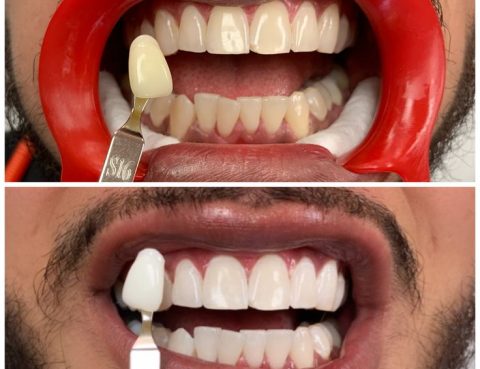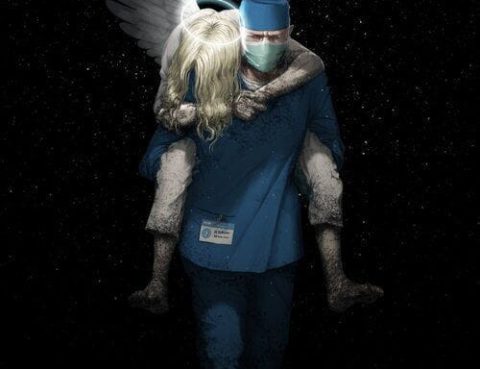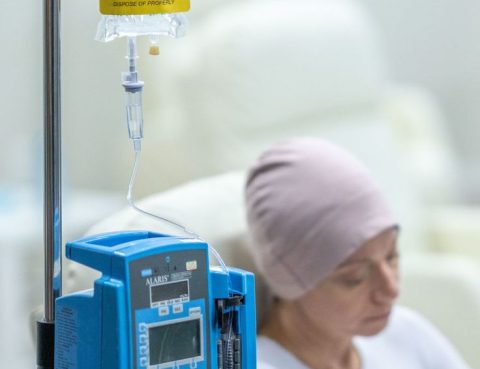
Cancer Patient Support: Genuine Care from ALMurshidi Do you know someone battling cancer who needs genuine care? At ALMurshidi Medical Tourism, we understand the importance of support and care for cancer patients. That’s why we offer treatment coordination services at specialized hospitals worldwide. Our Services: Advanced and specialized chemotherapy, radiation, or proton therapy. Comprehensive humanitarian…

Dental Veneers: The Secret to a Perfect Smile Looking to enhance your smile and improve the appearance of your teeth? Dental veneers offer a simple and effective solution for a radiant and confident smile. What are dental veneers? Veneers are thin shells made of porcelain or composite material, bonded to the front surface of the…

The Impact of Vitamin Deficiency on Hair Loss in Women Hair loss is a common issue among women and can be linked to several causes — one of the most important being vitamin deficiencies. Vitamins play a vital role in maintaining healthy hair growth, and lacking them may result in thinning and hair fall. ✅…

Kidney Transplant: Your Path to a Better Life Are you suffering from chronic kidney failure? Looking for a real opportunity to improve your health and return to a normal lifestyle? A kidney transplant could be the ideal solution for you. What is a Kidney Transplant? A kidney transplant is a surgical procedure in which a…

Knee Osteoarthritis: Pain and the Right Solution Are you suffering from ongoing knee pain that affects your quality of life? Knee osteoarthritis may be the cause — and knee replacement surgery could be the lasting solution. What Is Knee Osteoarthritis? Knee osteoarthritis is a condition in which the cartilage in the knee joint gradually wears…

Top Doctors: How to Choose the Right Doctor for Your Treatment When it comes to your health, choosing the right doctor is essential. With so many specialists across various medical fields, it can be challenging to find the one who best meets your needs. What Makes a Good Doctor? Expertise and competence in their medical…

Medical Tourism in Germany – A Premium Healthcare Experience with ALMurshidi If you’re looking for a luxurious and stress-free medical journey in Germany, ALMurshidi Medical Tourism offers outstanding services to ensure your comfort and the success of your treatment. ✅ Our Premium Services: Medical evaluation of your reports by top German specialists before your trip….

Hair Loss Treatment: Modern Solutions & Our Premium Medical Tourism Services Hair loss is a common condition that affects many men and women worldwide, often impacting confidence and overall appearance. It can be caused by a variety of factors, including genetics, hormonal imbalances, and underlying health or skin conditions. Fortunately, there are now effective medical…

Colon Cancer: A Comprehensive Guide Colon cancer is one of the most common types of cancer worldwide, affecting the colon or rectum. It is a serious disease that can be treated if detected in its early stages. Symptoms of Colon Cancer The symptoms of colon cancer vary, but they typically include: Changes in bowel movements:…

Alzheimer’s Disease: A Comprehensive Guide Alzheimer’s disease is a chronic neurological disorder that affects the brain and leads to memory loss and cognitive decline. It is one of the most common diseases affecting older adults, impacting their daily lives and social relationships. Symptoms of Alzheimer’s Disease The symptoms of Alzheimer’s disease vary, but they typically…

Intrauterine Insemination (IUI) Treatment: A Comprehensive Guide Are you struggling with fertility issues? Are you looking for advanced medical solutions to achieve your dream of parenthood? At Al-Marshdi Medical Tourism, we are here to help you get the best IUI treatment abroad. What is IUI? IUI is a medical procedure where sperm is inserted into…

In Pattaya and in need of medical care? We’re here for you!Pattaya, Thailand — with its beautiful beaches and stunning natural scenery — is not just a tourist destination; it has also become one of the best places to combine relaxation with medical treatment. Whether you’re vacationing in Pattaya or staying temporarily, ALMurshidi Medical Tourism…

🌴 In Phuket and not sure where to begin your treatment journey? We’re here to guide you step by step. Phuket – one of Thailand’s most beautiful islands – is the perfect blend of natural beauty and peace of mind. It’s also a top destination for those seeking medical treatment in a relaxing environment. But…

Looking for Medical Treatment in Bangkok? Here’s the Solution with Us! Are you considering traveling to Thailand for medical treatment?Have you heard about the high-quality healthcare in Bangkok but don’t know where to start?With Almurshidi Medical Tourism, your medical journey to Bangkok has become easier and faster than ever! ✅ Why Bangkok?Bangkok is one of…

🚐 Patient Transportation Service in the Eastern Region – with “ALMurshidi Medical Tourism” Are you having difficulty getting your patient to their medical appointment in the Eastern Region?Is your schedule too busy to accompany them? At ALMurshidi Medical Tourism, we provide the perfect solution with comfort and safety! We offer patient transportation services within the…

Comprehensive Health Checkups in Germany with Al-Murshidi Medical Tourism In today’s world, preventive healthcare has become a top priority. One of the best ways to stay on top of your health is through a comprehensive medical checkup. Germany is renowned for having one of the most advanced healthcare systems in the world, known for its…

In today’s interconnected world, accessing quality healthcare has become more achievable than ever. Almurshidi Medical Tourism is dedicated to bridging the gap between patients and world-class medical facilities, providing a comprehensive range of medical treatments in destinations known for their advanced healthcare services. Whether you’re seeking surgery, specialized treatments, or wellness therapies, we are here…

Navigating the complexities of international healthcare can be challenging, but Almurshidi Medical Tourism is here to redefine your experience. By offering a bridge to some of the world’s most advanced medical facilities and a comprehensive range of support services, we ensure that your medical journey is as smooth and successful as possible. Here’s how Almurshidi…

At Almurshidi Medical Tourism, we believe that maintaining your health is a continuous journey, not a one-time event. One of the most essential components of this journey is your annual physical exam. This routine check-up is a cornerstone of preventive healthcare, designed to keep you informed about your health status and to catch potential issues…
Eat, Speak, and Socialize with Confidence. Replace your Missing Teeth with Dental implants Dental implants help to restore a person’s chewing ability or appearance. Dental implants are surgically implanted into your jawbone to act as the roots of missing teeth. Because the titanium in the implants integrates with your jawbone, they will not slip,…

